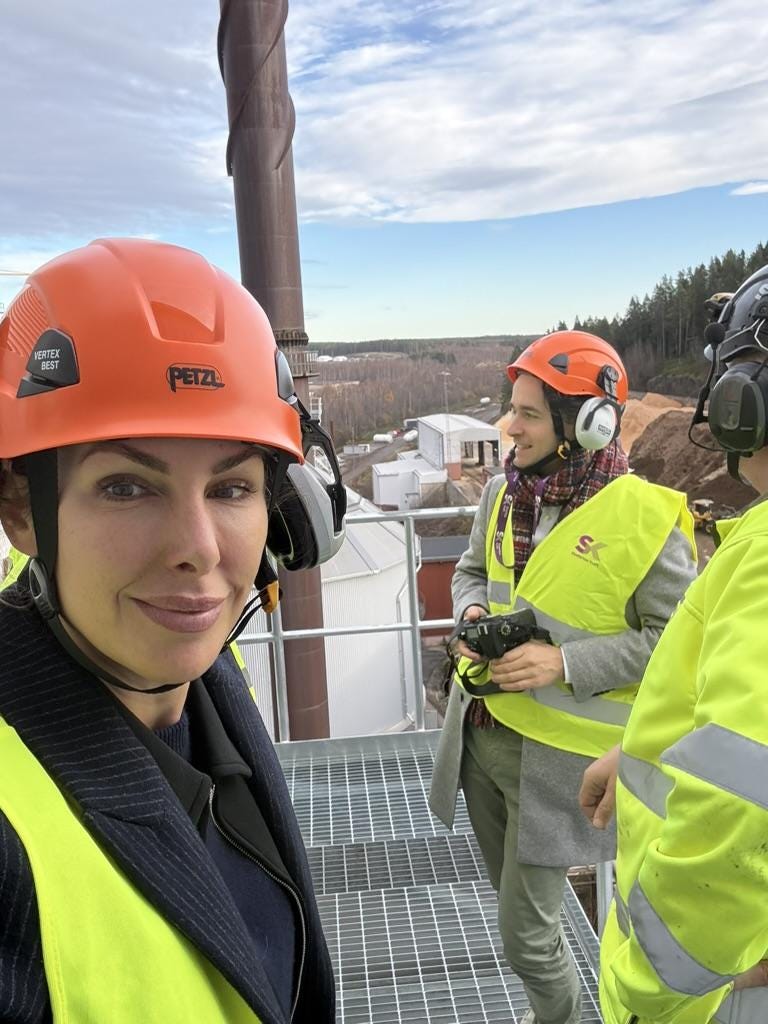We at ReCarber are thrilled to kick off the guest blogging journey with this post on The Carbon Removal Show’s blog. Let’s dive into a topic close to our hearts: the transformative power of forest biomass, particularly as we experience it in the arctic region of Sweden.
January 28th: A Cold Day in Skellefteå
As we write this, the air outside is crisp and biting. The snow-covered landscape reflects the deep chill of winter, and life moves at the measured pace the season demands. Yet inside homes and public buildings across Skellefteå, it’s warm and inviting—thanks to the district heating facility in Hedensbyn, which provides heat to numerous households and official buildings. The daring defy the cold and compete in the Skellefteå river in winter lap swimming, a sport that makes Wim Hof look like a warm up routine.
We’re reminded of our first visit to Hedensbyn in October. Together with our partner - community owned Skellefteå Kraft - we are working on making a BECCS facility reality in Hedensbyn, by 2028. Driving up the winding road, we were greeted by towering piles of biomass—so massive they resembled three-story buildings. The sight was unforgettable, the sheer scale of those bark, sawdust, and woodchip piles hinting at the powerful potential hidden within.
The Lifecycle of Forest Residues
Skellefteå is surrounded by forest and sawmills that produce timber and boards for construction, furniture, and export. These sawmills are part of a forestry industry that contributes significantly to Sweden’s economy and sustainability efforts. Residues like bark, sawdust, and woodchips are transported to Hedensbyn, where they’re converted into heat for the community.
Each biomass pile tells a story of purpose:

This use of forest residues exemplifies Sweden’s uniquely sustainable resource management. The forest industry accounts for 9–12% of Sweden’s industrial economy. Approximately 90% of single-family homes in Sweden are built with wooden structural frames, and in 2023, Sweden’s pulp, paper, and timber exports were valued at SEK 184 billion (~13.4 billion GBP). By repurposing these leftovers for energy production, Sweden achieves remarkable efficiency.
A Circular Approach to Biomass
The carbon emissions from cutting down a tree are accounted for under the country’s Nationally Determined Contribution (NDC). By finding multiple uses for biomass—from construction to energy production—we maximize the value of each tree. This holistic approach ensures that no part of the process goes to waste. The forest and it’s biomass is a gift that keeps on giving. Today, Sweden’s carbon sink is three times greater than it was in the 1950s, thanks to decades of responsible reforestation and forest management. Moreover, biodiversity is closely monitored and safeguarded through a range of policies and frameworks. Every natural area undergoes detailed inventorying to ensure the protection of ecosystems. This commitment is non-negotiable, as the impacts of global warming itself continue to pose significant challenges to biodiversity.
Looking to the Future
Even with its efficiency, the Hedensbyn heating plant still releases up to 170,000 tonnes of CO₂ every year. These emissions are part of the short carbon cycle, compensated by ongoing reforestation. But for us in the carbon removal world, it’s more than just a challenge—it’s a clear opportunity to capture and permanently store that CO₂ through BECCS.
Teaming up with point emitters that want to get moving on carbon removal, tackling the complexities of financing, storage, transport, and selling carbon removal credits—this is what ReCarber is all about.
We hope this post gives you a window into the work we’re committed to, alongside all of you in the community who are pushing to make carbon removal a reality, achieving our climate goals and restoring balance to our planet.
Warm regards,

To find out more about BECCS (BioEnergy with Carbon Capture and Storage), head back to The Carbon Removal Show season 1 episode 4: Can we do more with plant power?



